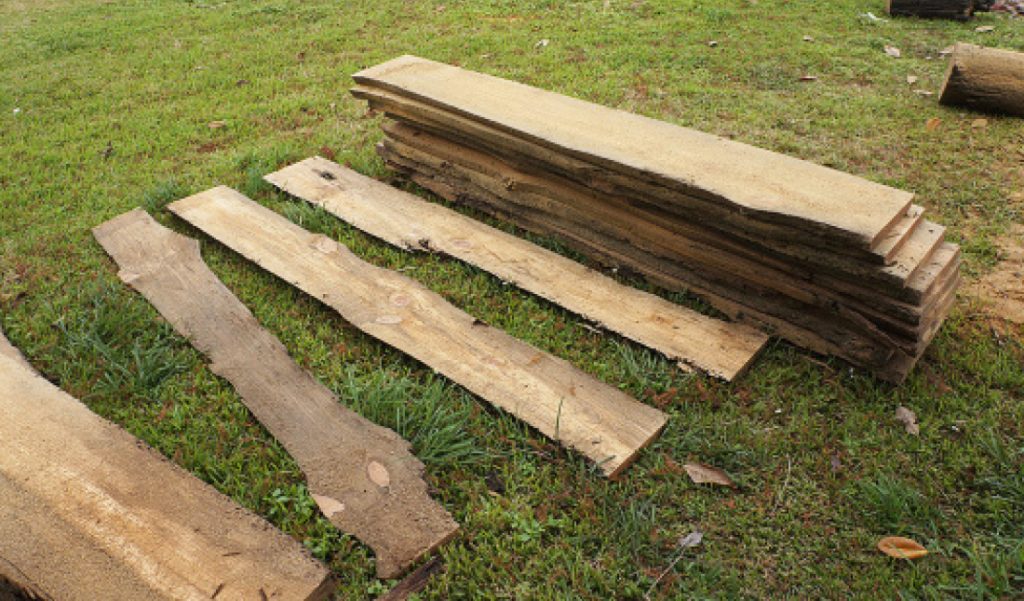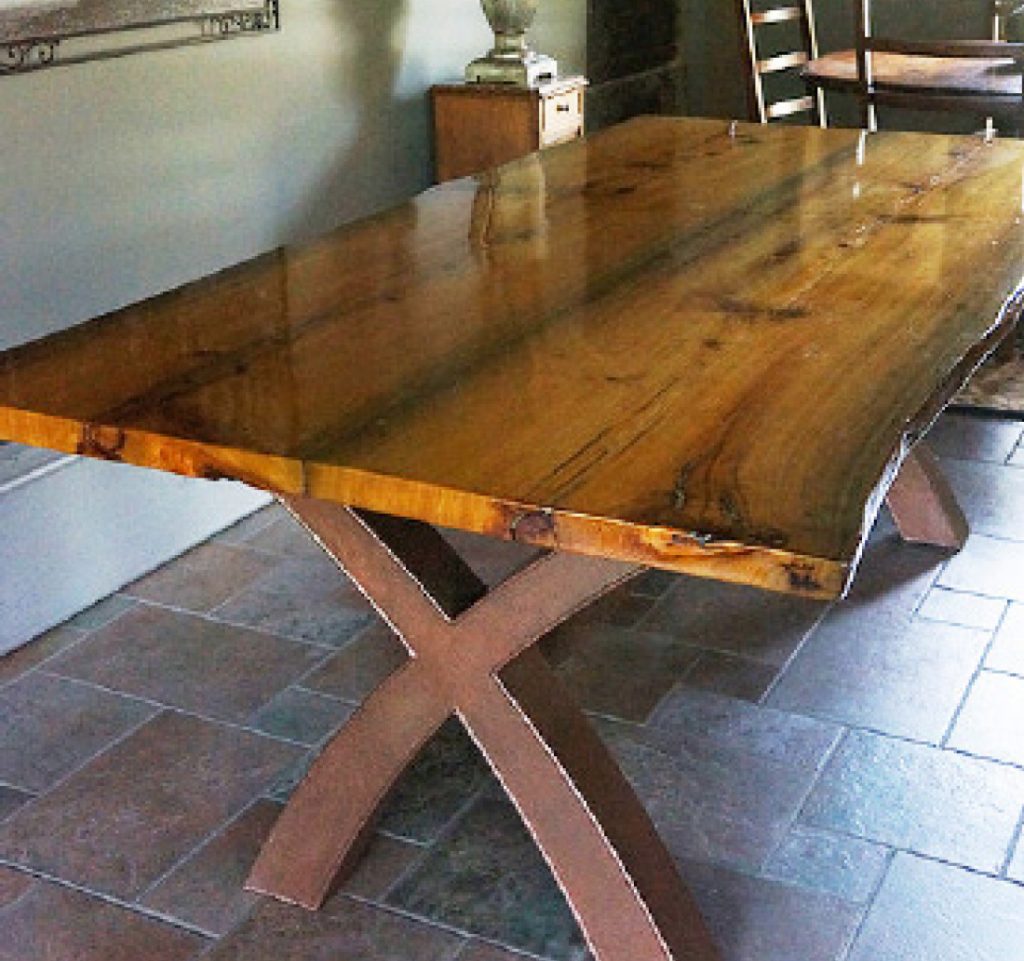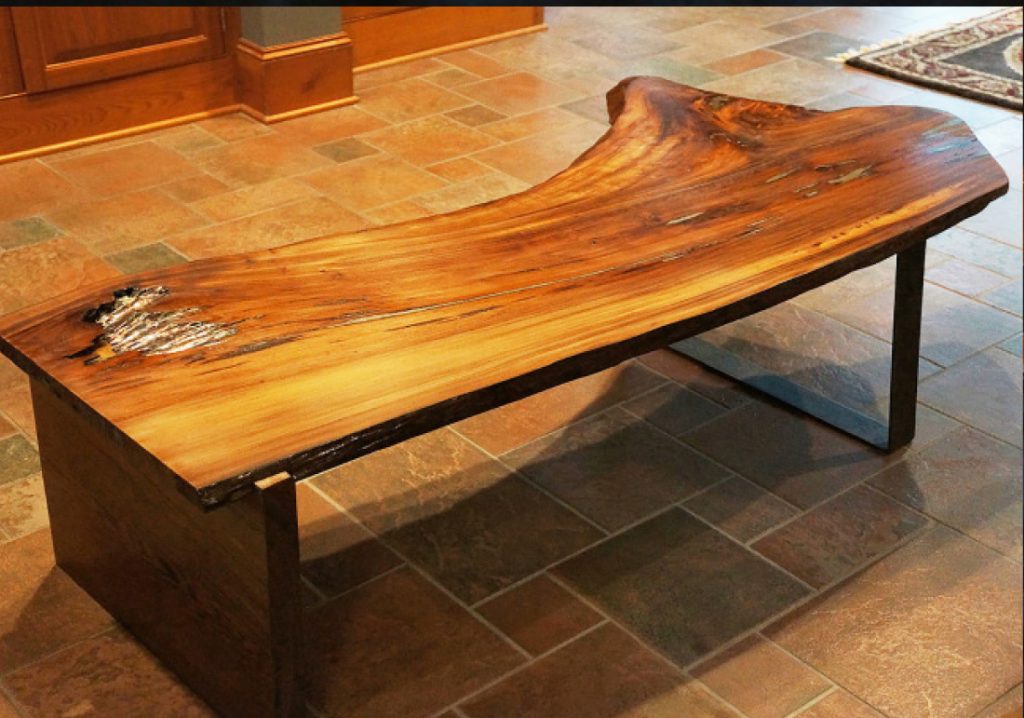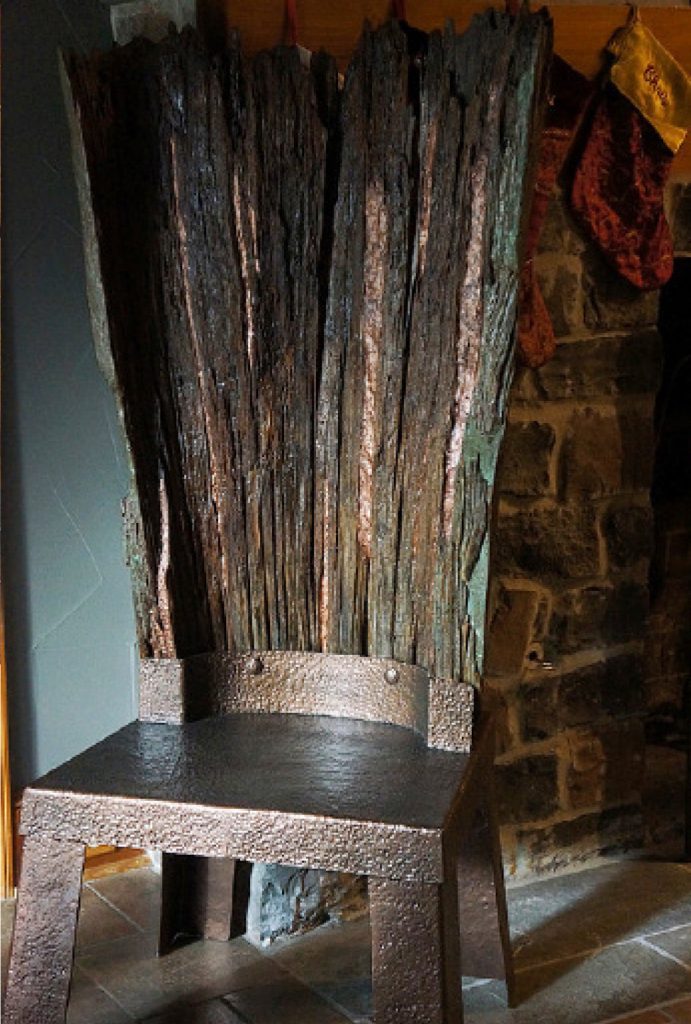Local Artist Creates Beautiful, Functional Furniture From Damaged Wood
By Karla Wall
I didn’t realize I was an artist until someone told me I was,” says Sandra Walkin.
But she is an artist, one who’s created unique wood furniture pieces from discarded and damaged wood from downed trees.
She’s also part scientist. A retired pharmacist, she’s mastered the alchemical process of inlaying metal into holes and imperfections in the wood pieces she’s developing. The result: eye-catching, showstopper pieces — weathered and rough, yet elegant. Walkin’s works are definite conversation pieces. As she likes to say, “every tree has a story to tell.”
A Self-Professed Tree Hugger
And she’s spent her life listening. She’s also part nature lover.
“I’m definitely a tree hugger,” she says. “I’ve always loved trees.”
Her husband, Patrick, a local anesthesiologist who’s nearing retirement himself, shares that passion. The couple purchased an 11-acre tract in South Lake Charles in 1991 and began turning it into an arboretum.
“A landscape architect friend helped us draw up a tree plan, and we planted about 5,000 trees and planned where we’d build a house one day,” she says. “We planted bare root seedlings and plugs of pine trees and hardwood trees native to Louisiana.”
For years, she says, “the grass was taller than the trees.” But eventually the couple were living on 11 acres of towering pine, elm, hickory and pecan trees.
“I’m very passionate about this place,” Walkin says. So much so that she retired to take care of the property full-time. “It’s pretty much a full-time job,” she says. “Furniture making is a hobby.”
And it was a hobby she’d been preparing for for years — without even realizing it. She and Patrick began building their home on the arboretum in 1999. As they were working on the home, Sandra, who says she’s always loved the idea of continuing education, took courses in wood finishing, plaster, faux finishes and gilding to help her in the work.
“I began building a knowledge base of finishing techniques long before I ever thought about making furniture, so I was blessed,” she says.
Creating Beauty From Destruction
In fact, it wasn’t until 2005 that Sandra began creating furniture. That summer, Hurricane Rita left numerous damaged trees in the arboretum.
“I saved pieces of wood left from the storm,” Sandra says, “but it was riddled with holes from insects.”
It occurred to her to make a bench from her “Rita wood.”

After “much trial and error,” she had the problem figured out. She had a local welder build the legs for the bench she’d designed, and she put a decorative silver metal finish on them.
“That bench was my first piece of furniture,” she says. “I still have it.”
Wanting to learn even more about carpentry and woodworking, she served a six-month apprenticeship with George Olivier of Olvier’s Cypress Furniture in Natchitoches, La.
That was followed by workshops and classes at the JD Lohr School of Woodworking in Pennsylvania and with designer and craftsman David J Marks in Northern California.
All of that work and study has resulted in some amazing furniture pieces, crafted not only from downed trees from her property (Hurricanes Laura and Delta provided plenty, sadly enough) but also from “sinker cypress” she’s scavenged for herself in the Atchafalaya, and other wood she’s purchased or been given.
“I love working with cypress,” she says. “There are so many colors to it. It’s exciting to mill a piece of cypress because you never know what you’re going to get.”
Sandra says she’s purchased wood “simply because it was a beautiful piece,” and waited for it to reveal to her what it was meant to be.
“For example, some years ago I purchased a gorgeous piece of cypress wood that was narrow with a cathedral wood grain pattern. Almost immediately I realized it would make a beautiful console table. I’m now making a console table from that piece of wood for a local business.”
One of her favorite pieces, she says, is her Throne Chair, and it has a similar story.
“George Olivier gave me a hollowed-out cypress stump about four feet tall,” she says. “He said, ‘If anyone can figure out what to make from that, it would be you.’”
She was watching Game of Thrones at the time. “It dawned on me that I could cut that cypress stump in half vertically and create a throne chair.”
That piece is one of several she was invited to display in a 2016 exhibition at the 1911 City Hall Museum.
“I never considered myself an artist until then,” she’s said.
While that exhibit, and the opportunity to exhibit pieces at a local store, have led to some commissions, she says she never wants to get too busy.
“I’m trying to strike a balance between creating what I want to create and doing pieces for others,” she says. “I’m a one-person shop, and I want to remain a one-person shop. I want the freedom to just create.”
The most difficult part of that creative process, Sandra says, is letting go of the finished products.
“It’s easier now than it was in the beginning,” she says. “Every piece is special. Some are harder to let go than others. I want it to always be that way. If I ever lose that feeling, I’ll know it’s time to stop.”
For now, Sandra is content to create art for herself and a few clients.
“I divide my time between caring for our arboretum and making furniture. One begat the other. I’ve always loved trees. That love inspired me to plant a forest. That forest gave me beautiful pieces of wood felled by a storm. Creating something from that wood was a natural evolution. It’s a good life. One for which I’m very thankful.”




















Comments are closed.